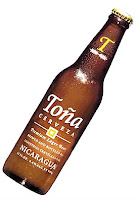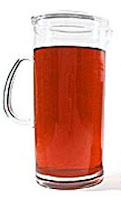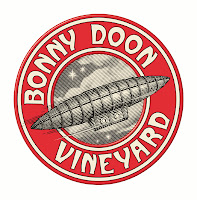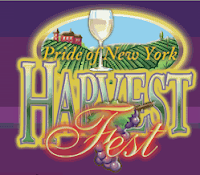
If you need a last-second inspiration for your New Year's Toast or a bit of verse appropriate to the moment, just go to my "Toasts & Crumbs" blog and scroll down. I think you'll find something you like.
HAPPY NEW YEAR 2008!

 Bill:
Bill: In no particular order, here is a big chunk of my 2007 in review:
In no particular order, here is a big chunk of my 2007 in review: (4.) Best Appelation Visit: After participating in a wine competition judging in Napa, CA, I drove to nearby Lodi to experience a region in transition from wine grape producing to winemaking, sort of what Napa was like 20 years ago. The region is dotted with third- and fourth-generation farm families who have been moving from mostly supplying major winemakers to developing their own wines and brands.
(4.) Best Appelation Visit: After participating in a wine competition judging in Napa, CA, I drove to nearby Lodi to experience a region in transition from wine grape producing to winemaking, sort of what Napa was like 20 years ago. The region is dotted with third- and fourth-generation farm families who have been moving from mostly supplying major winemakers to developing their own wines and brands.  (6.) Best New-to-Me Beer: Toña, hands down. This Nicaraguan beer is a lager brewed by Compania Cervecera de Nicaragua (CCN), made with German yeast and malt, North American hops and Nicaraguan deep-well water. The chief brewer is Rudiger Adelmann, who formerly worked for Steinecker GmbH, a German company that designs and produces brewing and filter technologies for the beverage production industry.
(6.) Best New-to-Me Beer: Toña, hands down. This Nicaraguan beer is a lager brewed by Compania Cervecera de Nicaragua (CCN), made with German yeast and malt, North American hops and Nicaraguan deep-well water. The chief brewer is Rudiger Adelmann, who formerly worked for Steinecker GmbH, a German company that designs and produces brewing and filter technologies for the beverage production industry.  (8.) Best Host's Revenge: I've often wanted to find a way to get even with guests who reply to "What would you like to drink?" with the non-committal -- and unhelpful -- response "Anything" or "Whatever." A Singapore company called Out of The Box came up with soft drinks called "Anything," a carbonated drink, and "Whatever," a tea-based non-carbonated product. So, when someone makes the appropriate inappropriate reply, you can hand them a can of what matches their response. But that's only one level of revenge.
(8.) Best Host's Revenge: I've often wanted to find a way to get even with guests who reply to "What would you like to drink?" with the non-committal -- and unhelpful -- response "Anything" or "Whatever." A Singapore company called Out of The Box came up with soft drinks called "Anything," a carbonated drink, and "Whatever," a tea-based non-carbonated product. So, when someone makes the appropriate inappropriate reply, you can hand them a can of what matches their response. But that's only one level of revenge.  That's in the old Irish tongue. Put in plain English, Happy Christmas!
That's in the old Irish tongue. Put in plain English, Happy Christmas! Cognac may not come immediately to mind when one thinks of the rapidly growing niches of alcoholic beverages. It should.
Cognac may not come immediately to mind when one thinks of the rapidly growing niches of alcoholic beverages. It should. The creation of hybrid lines of grapes goes on around the globe. But what happens if researchers digging ever deeper into the science of grapes finally crack the genetic code of the famously fickle pinot noir grape and begin tinkering?
The creation of hybrid lines of grapes goes on around the globe. But what happens if researchers digging ever deeper into the science of grapes finally crack the genetic code of the famously fickle pinot noir grape and begin tinkering? First it was '60s movie sex siren Mamie Van Doren coming out of retirement to bare it all for a new line of wines bearing her image. Now, as if to show that the younger generation can take a marketing hint, celebutart Paris Hilton is showing up in the nude to push her new canned wine brand.
First it was '60s movie sex siren Mamie Van Doren coming out of retirement to bare it all for a new line of wines bearing her image. Now, as if to show that the younger generation can take a marketing hint, celebutart Paris Hilton is showing up in the nude to push her new canned wine brand. The wine in a can, called Rich Prosecco, comes in original, passion fruit and strawberry flavors. It will make its European debut this week, and be introduced to the U.S. soon after the first of the year.
The wine in a can, called Rich Prosecco, comes in original, passion fruit and strawberry flavors. It will make its European debut this week, and be introduced to the U.S. soon after the first of the year. The world of European wines probably won't be turned upside-down as some had feared after the European Parliament this week voted to dilute a planned reform of the European Union wine sector.
The world of European wines probably won't be turned upside-down as some had feared after the European Parliament this week voted to dilute a planned reform of the European Union wine sector. Today is the 74th anniversary of the repeal of Prohibition. Or is it truly the day that hideous experiment in social control ended?
Today is the 74th anniversary of the repeal of Prohibition. Or is it truly the day that hideous experiment in social control ended? Washington state's wine grape crop hit a record 127,150 tons this year, a 5.5% increase in the harvest of cabernet, merlot, riesling and other varietals.
Washington state's wine grape crop hit a record 127,150 tons this year, a 5.5% increase in the harvest of cabernet, merlot, riesling and other varietals. Did you hear the one about the Indian company that brewed wine out of pure tea?
Did you hear the one about the Indian company that brewed wine out of pure tea? Most wine labels tell you (a.) what grapes were used in creating the product, and (b.) whether it containes sulfites.
Most wine labels tell you (a.) what grapes were used in creating the product, and (b.) whether it containes sulfites. One of Australia's largest winemakers says the nation's beleaguered wine industry is showing signs of recovery despite hideous weather conditions.
One of Australia's largest winemakers says the nation's beleaguered wine industry is showing signs of recovery despite hideous weather conditions. 'Tis the season for pouring champagne. But sometimes it's difficult to get it just right, particularly if you're unsure just how frothy the particular bubbly you bought will be.
'Tis the season for pouring champagne. But sometimes it's difficult to get it just right, particularly if you're unsure just how frothy the particular bubbly you bought will be. Three entries took the top category trophies and 10 gold medals were awarded by judges in the inaugural International Sake Challenge, held in Tokyo. Two of the golds went to rice wine products from the Kamotsuru Sake Brewering Co.
Three entries took the top category trophies and 10 gold medals were awarded by judges in the inaugural International Sake Challenge, held in Tokyo. Two of the golds went to rice wine products from the Kamotsuru Sake Brewering Co. While much of the U.S. wine grape-growing areas are reporting moderate (California) to spectacular (New York's Finger Lakes) crops this year, much of Europe and Australia are quite the opposite.
While much of the U.S. wine grape-growing areas are reporting moderate (California) to spectacular (New York's Finger Lakes) crops this year, much of Europe and Australia are quite the opposite. It was a Disney world when the editors of Cheers, the beverage industry magazine, released its 2008 Cheers Awards for Beverage Excellence.
It was a Disney world when the editors of Cheers, the beverage industry magazine, released its 2008 Cheers Awards for Beverage Excellence. Constellation Brands, headquartered in Fairport, NY, has purchased Fortune Brands Inc.'s wine business.
Constellation Brands, headquartered in Fairport, NY, has purchased Fortune Brands Inc.'s wine business. COLONIE, NY -- The annual Pride of New York Harvest Fest at The Desmond, the Williamsburg-style resort/convention complex just outside the state capital of Albany, is a great opportunity to try a wide array of wines and foodstuffs produced all across New York State.
COLONIE, NY -- The annual Pride of New York Harvest Fest at The Desmond, the Williamsburg-style resort/convention complex just outside the state capital of Albany, is a great opportunity to try a wide array of wines and foodstuffs produced all across New York State.








 ART HUNT (CENTER), OWNER AND WINEMAKER OF HUNT COUNTRY VINEYARDS IN THE FINGER LAKES, JOINED BILL AND FRED TO ADD COMMENTARY FROM A FIRSTHAND POINT OF VIEW.
ART HUNT (CENTER), OWNER AND WINEMAKER OF HUNT COUNTRY VINEYARDS IN THE FINGER LAKES, JOINED BILL AND FRED TO ADD COMMENTARY FROM A FIRSTHAND POINT OF VIEW. The resemblance is uncanny in some photos, but the intent was purely unintentional.
The resemblance is uncanny in some photos, but the intent was purely unintentional.
 If that sounds like a charming fellow who gives much thought to his craft and products, it is. Mariani, a New York-educated (Colgate and Cornell) Long Islander who is co-CEO of Castello Banfi with cousin Cristina Mariani-May, spends much of his time traveling from market to market to proselytize for their wines.
If that sounds like a charming fellow who gives much thought to his craft and products, it is. Mariani, a New York-educated (Colgate and Cornell) Long Islander who is co-CEO of Castello Banfi with cousin Cristina Mariani-May, spends much of his time traveling from market to market to proselytize for their wines.  What's missing from this shopping list?
What's missing from this shopping list? Fears among some European fruit wine producers that the European Commission would side with those who wanted only grape wines to be called true wine can breathe a bit easier.
Fears among some European fruit wine producers that the European Commission would side with those who wanted only grape wines to be called true wine can breathe a bit easier. Excerpted from Drinks International:
Excerpted from Drinks International: The 270-nation European Union has been on an ambitious pace in recent times to change the face of the alcoholic spirits industry.
The 270-nation European Union has been on an ambitious pace in recent times to change the face of the alcoholic spirits industry. How would you like to be the first on your block to serve a genuine Oregon Pinot Grigio?
How would you like to be the first on your block to serve a genuine Oregon Pinot Grigio? The quality of American Rieslings, led by wineries in New York's Finger Lakes region, has been rising exponentially in recent years. Nevertheless, German winemakers in the Moselle River region (as seen here) report exports of their famoius Rieslings rose 21% in the year ending in July, fueled by rising demand from U.S. consumers.
The quality of American Rieslings, led by wineries in New York's Finger Lakes region, has been rising exponentially in recent years. Nevertheless, German winemakers in the Moselle River region (as seen here) report exports of their famoius Rieslings rose 21% in the year ending in July, fueled by rising demand from U.S. consumers. Canada remains a "beer town," according to the latest statistical report on purchase of alcoholic beverages, but wine is the fastest-growing category.
Canada remains a "beer town," according to the latest statistical report on purchase of alcoholic beverages, but wine is the fastest-growing category. If it's a 2006 Weingut Juliusspital Iphofer Julius-Echterberg Riesling Beernauslese, it's got to be good.
If it's a 2006 Weingut Juliusspital Iphofer Julius-Echterberg Riesling Beernauslese, it's got to be good. Judges in this year's Veritas wine competition, the longest-running such event in South Africa for native wines, handed out 44 double gold medals to a field of mroe than 1,900 entries.
Judges in this year's Veritas wine competition, the longest-running such event in South Africa for native wines, handed out 44 double gold medals to a field of mroe than 1,900 entries. Story from the Western Mail newspaper, photo from the BBC:
Story from the Western Mail newspaper, photo from the BBC: Joan Lucille Olander earned her first public acclaim at age 15 when she was named Miss Palm Springs.
Joan Lucille Olander earned her first public acclaim at age 15 when she was named Miss Palm Springs. Van Doren, who has been married five times, was known for her sexual image rather than her acting chops during her Hollywood days. One of the memorable quotes attributed to her was this: ""I don't wear panties anymore. This startles the Hollywood wolves so much they don't know what to pull at, so they leave me alone."
Van Doren, who has been married five times, was known for her sexual image rather than her acting chops during her Hollywood days. One of the memorable quotes attributed to her was this: ""I don't wear panties anymore. This startles the Hollywood wolves so much they don't know what to pull at, so they leave me alone."